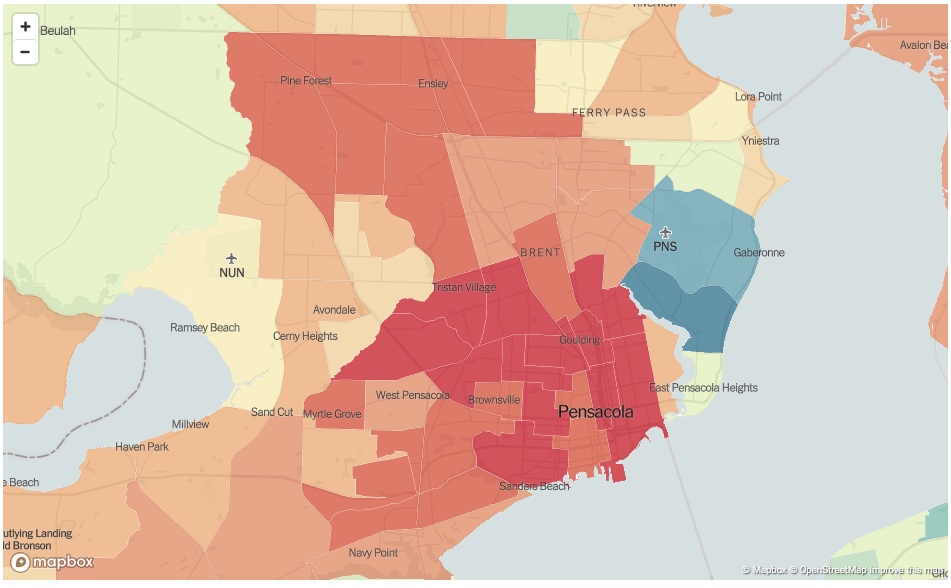A new year, a new calling to invest in our children
- January 22, 2019
- / Shannon Nickinson
- / early-learning

What are you prepared to do?
The answer, I think, must be, “More.”
This week, as we mark MLK Day, we are encouraged to reflect on “the State of the Dream” that the Rev. Dr. Martin Luther King offered us. We contemplate his soaring oratory. We think of John Lewis, one of the original Freedom Riders, now a revered member of the government he helped reshape, the “conscience of the House” of Representatives.
We are thankful that the “whites” and “colored” signs are gone from our public spaces. We are proud of the progress we have made.
“The arc of the moral universe is long, but it bends toward justice,” we say.
And that is true.
But it doesn’t mean we can assume that time is on our side. It means we must get up and do some of the work to bend it.
“You have to get out there and push, and pull, to try to make things better for the generation yet unborn,” said Lewis in a recent episode of “Oprah’s Master Class The Podcast. “We have to be engaged, all of us, as members of the human family, as citizens of this country…. The fight is not over. We have to continue to fight.”
In 2017, the Florida Department of Education released kindergarten readiness data for the first time in three years. It showed that as a whole, the Pensacola area has a long way to go toward bending that arc of history in favor of our children.
That year’s data showed that 46 percent of Escambia schoolchildren were kindergarten ready in 2017. In Santa Rosa County, the readiness rate was 60 percent.
The state also offered the data broken down by school.
There are 32 elementary schools in Escambia County; 23 of our elementary schools had readiness rates of 50 or less. The lowest readiness rate for a school was 21.67 percent.
There are 14 elementary schools in Santa Rosa County; 5 of those schools had readiness rates at or below 50 percent. The lowest readiness rate for a school was 38.46 percent.
The Daily Mail, The New York Times and other publications recently highlighted research from the U.S. Census Bureau, Harvard and Brown universities that shows at the Census tract — or neighborhood — level, which ZIP codes offer children born in poverty a better path out of that life.
Children born in the neighborhoods where SCI’s parent outreach program is working will earn between $18,000 and $21,000 a year as adults, according to the data analysis.
Change the neighborhood, and adult earning power goes up — some.
Kids born into poverty in Scenic Heights or Cordova Park will make between $34,000 and $41,000 as adults, the analysis shows.
This is why we must re-commit ourselves to the work of an Early Learning City.
Kae Dixon is a mother of four and an SCI volunteer. The New York native has lived in the Pensacola area for some time. She believes that SCI’s early learning work is “the front line of the future.”
To make this change on a community level, Dixon says a special kind of person is key.
“It will take people who believe in gardening,” she says.
We couldn’t agree more.
The seeds we are planting will grow, but they need to be nurtured, with time and patience. We need to work on the ground, sometimes on hands and knees, and we must get a little dirt on our hands to do it.
But we believe the reward will be great.
 CivicCon launches with a look at good growth in cities
CivicCon launches with a look at good growth in cities
 Building stronger brains one baby, one parent at a time
Building stronger brains one baby, one parent at a time
 SCI debuts commercial on Early Learning City
SCI debuts commercial on Early Learning City
 Entrecon: World class speakers and an opportunity to sharpen skills
Entrecon: World class speakers and an opportunity to sharpen skills
 PYP Quality of Life survey 2017
PYP Quality of Life survey 2017
 EntreCon Pensacola 2016: A look back
EntreCon Pensacola 2016: A look back
 Leadership tip: getting better employee takeaways
Leadership tip: getting better employee takeaways
 Leadership tip: be interested instead of interesting
Leadership tip: be interested instead of interesting
 Leadership tip: delivering difficult messages
Leadership tip: delivering difficult messages
 Brain Bags boost Arc, Early Childhood Court programs
Brain Bags boost Arc, Early Childhood Court programs